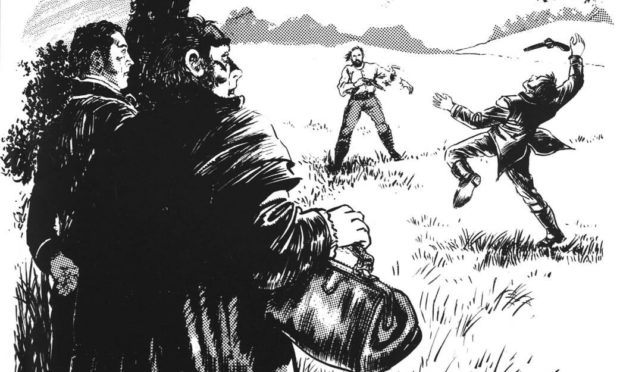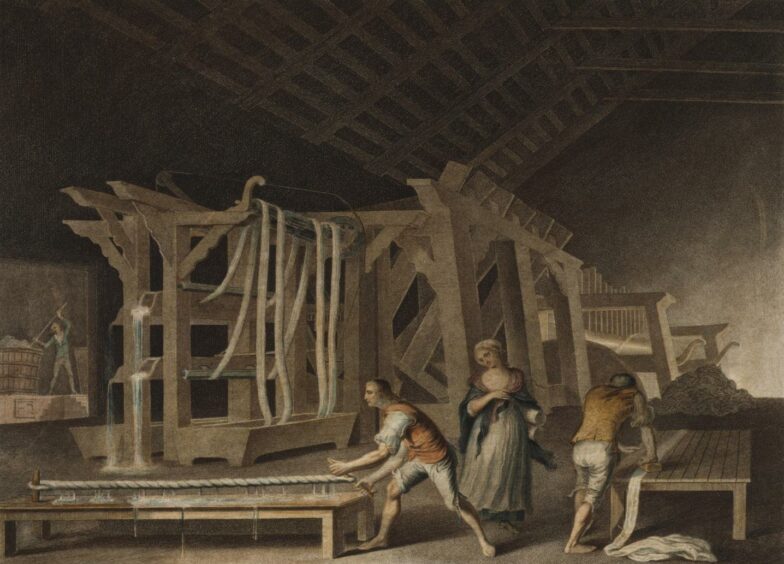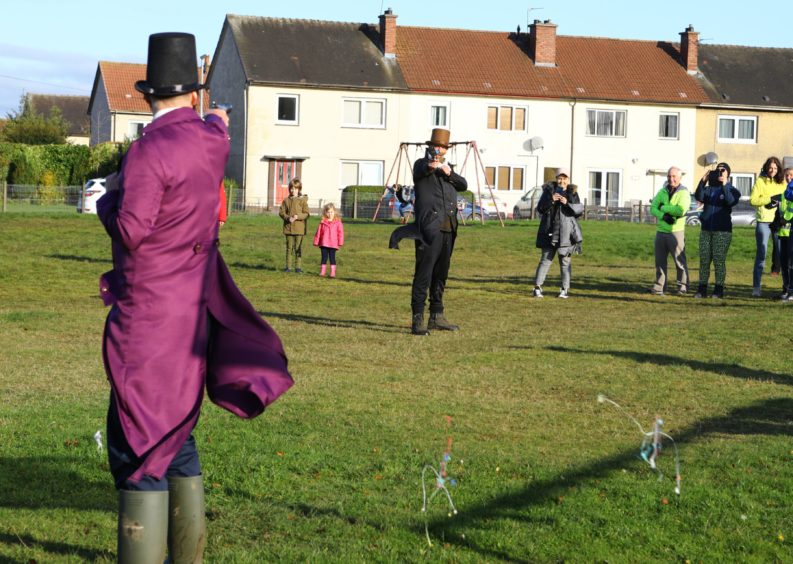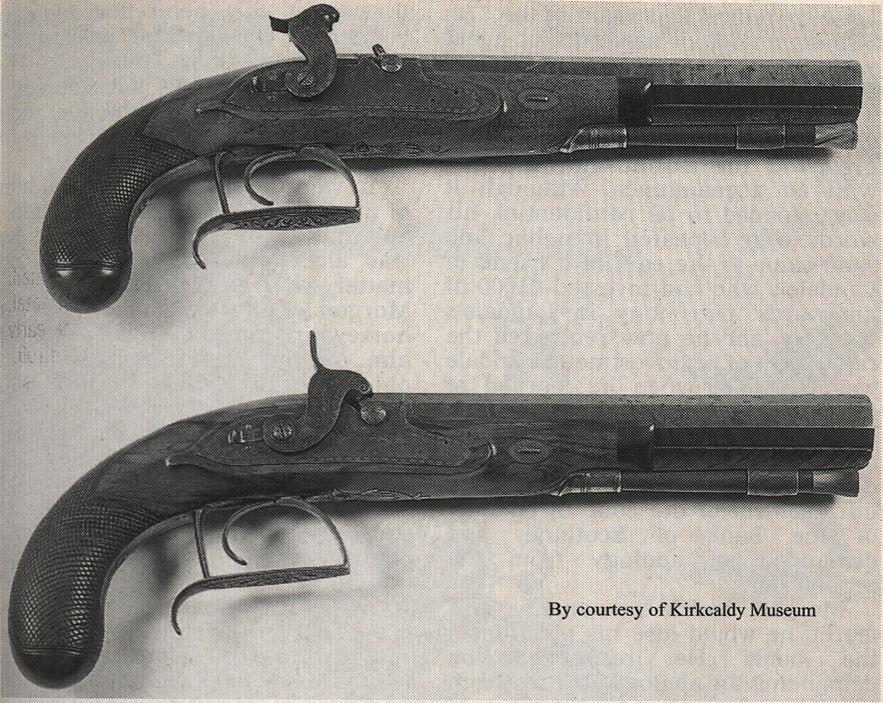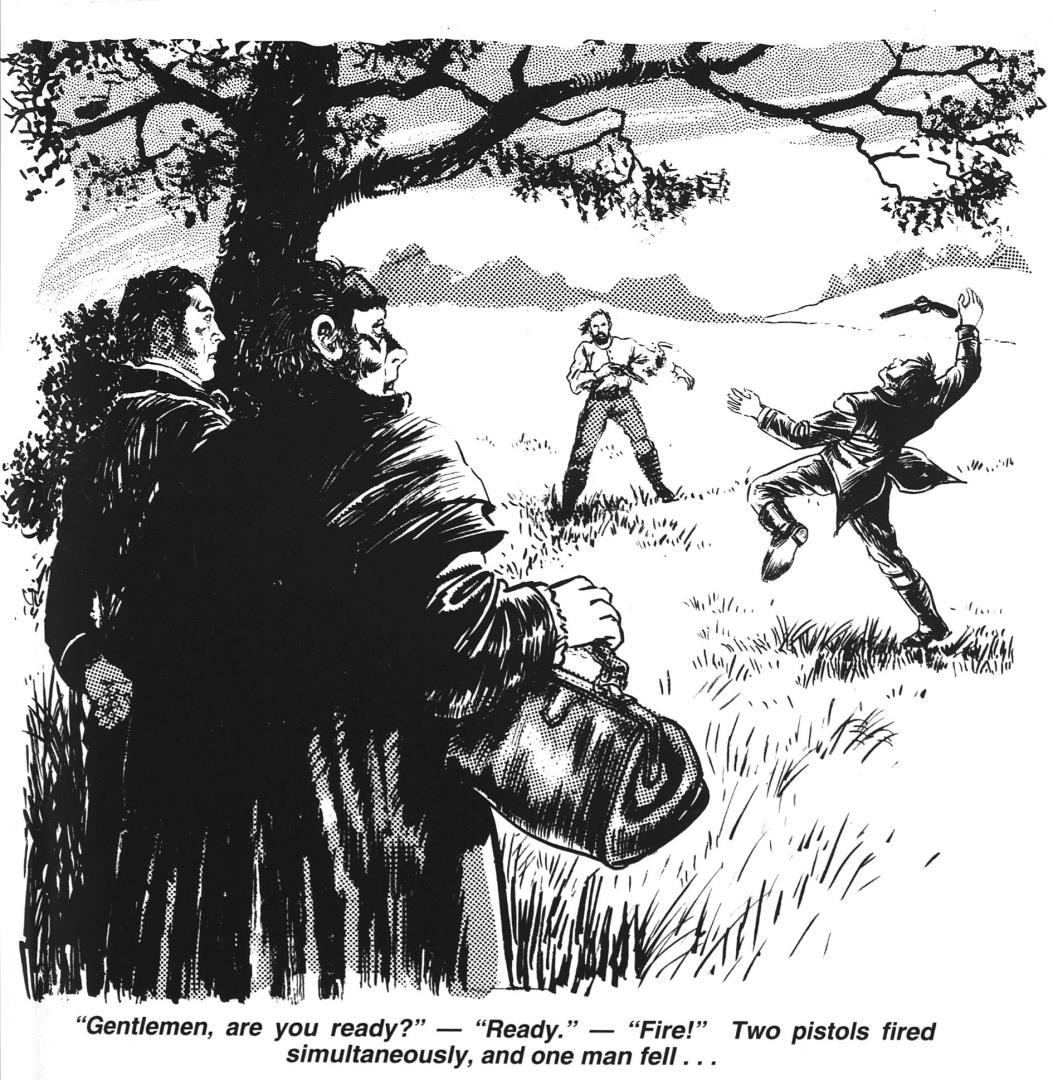When you think of gun duels your mind is instantly transported to the tumbleweed-strewn Wild West where cowboys would take to the dusty terrain to battle it out with pistols in hand.
You probably wouldn’t imagine the scene playing out in a field in Cardenden but that is exactly what happened 195 years ago, when the last fatal gun duel in Scotland was fought between linen merchant David Landale and “fiery” banker George Morgan.
What triggered the duel? A bump to the head with an umbrella on Kirkcaldy High Street, of course.
Honour and public perception was of massive importance in the 19th Century, so much so that any acts that seemed to be damaging to a gentleman’s reputation were seen as completely unacceptable – especially if the allegations were false.
It was for exactly this reason, and the fact that he was often described as ill tempered and hot headed, that George Morgan would lose his life on August 23 1826 after the rumours he spread came back to haunt him.
Linen business wearing thin
In the early 1800s the Kirkcaldy’s linen industry was proving extremely successful with around two million yards of linen created in the town’s mills in 1818 alone.
David Landale had taken over his father James’s business following his death in 1799 and while James had found success in the tanning of linen, David found that bleaching would be more profitable and so he obtained ground and erected extensive bleaching works at Lochty Water in Thornton.
However, in the years following the Napoleonic Wars businesses began to slump and the economy was drained; this included the linen trade.
In 1826 David entered his bank, the Bank of Scotland in Kirkcaldy’s Townsend Place, to hand in Bills of Exchange, a promise that he would pay the bank back the loan on an agreed date.
The exchange would be seen as proof that David would pay back the amount; however, he was met with a frosty reception from his banker, George Morgan.
George was a recently retired lieutenant of the 77th Regiment of Foot and was now a co-agent with his father at the Kirkcaldy bank branch.
Following George’s refusal of the loan, David had to face the embarrassing task of returning to people who owed him money and asking them to give him cash instead.
Due to his treatment David also decided to withdraw each of his accounts from the bank.
This was when George began to spread rumours about the state of David’s credit and discussing the refused loan with other parties.
After David found out he wrote a strongly worded letter to the Bank of Scotland’s headquarters, something which fiery George was furious to hear about.
Now his reputation was also in question – something he wouldn’t stand for.
A duel is called
After hearing of the scathing letter written to his employers, George began conjuring up a plan that would see a duel being called between the pair.
He had discussed with friends that he intended to challenge David himself; however, acquaintances reminded him that, as the challenger, he would be breaking the law, no matter what happened.
He decided the best plan would be to ‘attack’ David on the street if he were to ever see him, hoping to entice David into demanding the duel himself.
David went about his business as normal during this time, although he was well aware of George’s threats against him.
One morning, as George was waiting for his newspaper in the little shop owned by Mr Cummings just opposite the bank, David walked past the door and George seized his opportunity.
He rushed out of the shop to catch up with him and struck David over the head with his umbrella shouting “take that, sir”, and vowing to deliver more of the same.
David was, unsurprisingly, left furious following the assault, especially due to its public nature.
He was by no means seen as a lowly member of society and with his honour being questioned before the whole community, he had to act.
Although he was reluctant to duel, he believed if he did not his name, reputation and therefore business would be left in tatters.
By 2pm on August 22 1826 David had written out a challenge to George and appointed William Millie as his second.
George was delighted that his plan had worked and gleefully accepted the duel, which was arranged for dawn the next day at Cardenbarns Farm, just outside Cardenden, with Lieutenant Milne of the Royal Navy acting as his second.
Duel preparations
There is little evidence to suggest David had ever shot a pistol and he didn’t own one at the time of the duel.
He had to travel to Edinburgh to purchase a set and chose two second-hand percussion fired pistols, which is significant because they were much more reliable than the flintlock pistols that former serviceman George favoured.
David also had to ensure his estate was in order so he wrote letters to his doctor and estate agent.
The next morning the two men met on the field. As was common place with duels, a doctor would be brought on site who would face away from the duel so he could still retain deniability following the fatal shot.
Mr Millie, David’s second, asked Lieutenant Milne if George had an apology to make when George himself shouted back “no apology!”.
There was further delay when David realised that the pistols he had purchased the day before were superior to George’s and he offered him the use of one of his percussion locks.
Sure of his upper hand, George declined the merchant’s offer and the duel was set.
The duel was set at 12 paces apart and, after a false start when George raised his pistol prematurely, the guns were fired simultaneously.
Morgan fell, dying almost instantly despite the doctor’s immediate intervention.
David’s shot found its place between Morgan’s fifth and sixth ribs on the right side.
The last fatal duel in Scotland was complete and one man was dead. David and Mr Millie immediately left the field and headed for the town in deep distress.
David was a religious man and it was believed that he never forgave himself after the duel.
David was charged with the murder of George Morgan and stood trial at the Circuit Court in Perth on September 22 1826.
An array of witnesses took to the stand for the defence, including Robert Stocks, who had known David for 25 years and thought highly of him.
He told the court David was “one of the most orderly and correct gentlemen among my acquaintances”.
The testimony of his friends and the powerful case made by his counsel, Lord Jeffrey, saw David acquitted and he left the court with his reputation intact.
Two years after the duel David Landale married Mary Russell, the daughter of a fellow Kirkcaldy merchant, and the couple welcomed three sons and four daughters into the world.
His business continued to do well and in 1851 he employed 50 women and 16 men. He also took an interest in civic affairs and became provost of Kirkcaldy for a year in 1835.
In an interesting twist of fate, 10 years before David’s death his daughter wed George Morgan’s nephew, further connecting the families.
David died at his family home in 1861, aged 74.
The guns that were used in the infamous duel are now held by Kirkcaldy Galleries and a cairn at Cardenbarns Farm was raised to commemorate the last fatal duel on Scottish soil.
